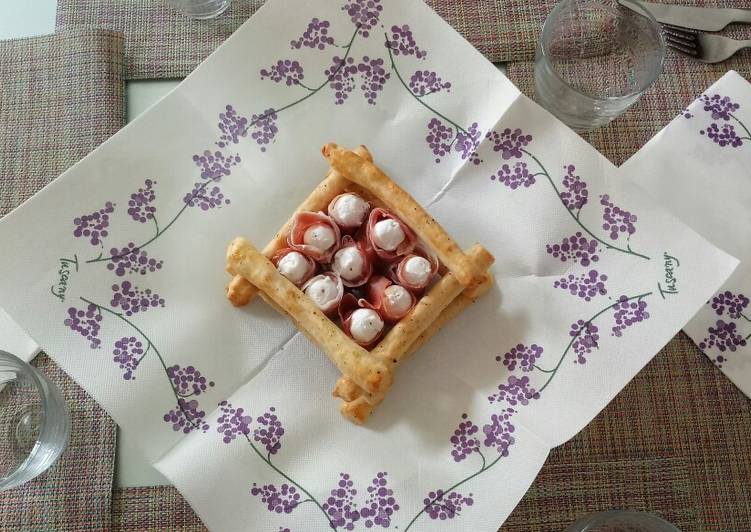Cacio and pepe breadsticks with prosciutto and goat's cheese. Literally translated, cacio e pepe means "cheese and pepper" in Italian. For centuries, this famous cheesy pasta dish has been a staple in Roman cuisine. It is traditionally made with thick spaghetti (traditionally bucatini), Pecorino cheese (or you could sub in Parmesan), and loads of freshly-cracked.
 Spread a thin layer goat cheese onto each fig. This is how to make real cacio e pepe , the classic Roman pasta dish. Cacio e pepe is one of the simplest pasta dishes to make but it can be a bit tricky. You can have Cacio and pepe breadsticks with prosciutto and goat's cheese using 7 ingredients and 4 steps. Here is how you cook it.
Spread a thin layer goat cheese onto each fig. This is how to make real cacio e pepe , the classic Roman pasta dish. Cacio e pepe is one of the simplest pasta dishes to make but it can be a bit tricky. You can have Cacio and pepe breadsticks with prosciutto and goat's cheese using 7 ingredients and 4 steps. Here is how you cook it.
Ingredients of Cacio and pepe breadsticks with prosciutto and goat's cheese
- You need 100 g of flour.
- You need 50 g of cold butter.
- You need 35 ml of cold milk.
- It's 20 g of Pecorino cheese.
- Prepare of Lots of black pepper.
- You need of Egg to glaze.
- You need of Prosciutto and cheese to serve.
You could even serve these Goat Cheese and Prosciutto Wrapped Breadsticks along with a dip. They would be delicious with a creamy spinach dip. Spread a layer of goat cheese over a slice of prosciutto. Use a sharp knife to slice the prosciutto in half creating.
Cacio and pepe breadsticks with prosciutto and goat's cheese step by step
- Rub butter and flour together until you get breadcrumbs. Add cheese and pepper..
- Add milk gradually, bring it together with your fingers until you get a dough. Wrap in cling film and leave rest in the fridge for an hour. Preheat oven to 180. Divide dough into even sections.
- Roll out with your hands into sticks. Glaze with egg, sprinkle with pepper and bake for about 18-20 mins. Leave to cool on a wire rack. When ready, start to create a little structure as shown, like a weaved basket.
- Roll up prosciutto as shown and add a piece of cheese inside. Add them all inside your little basket 😍.
This is one of the most traditional dishes of the Lazio region. It's so simple and requires just a few ingredients. It was developed in that area due to the abundance of shepherds in the region who produce Cacio (Roman cheese). Cacio e pepe literally translates to "cheese and pepper," and while those are the prominent flavors here, this dish is SO much more. For this recipe, you're going to be using two classic Italian cheeses: Parmesan and pecorino.